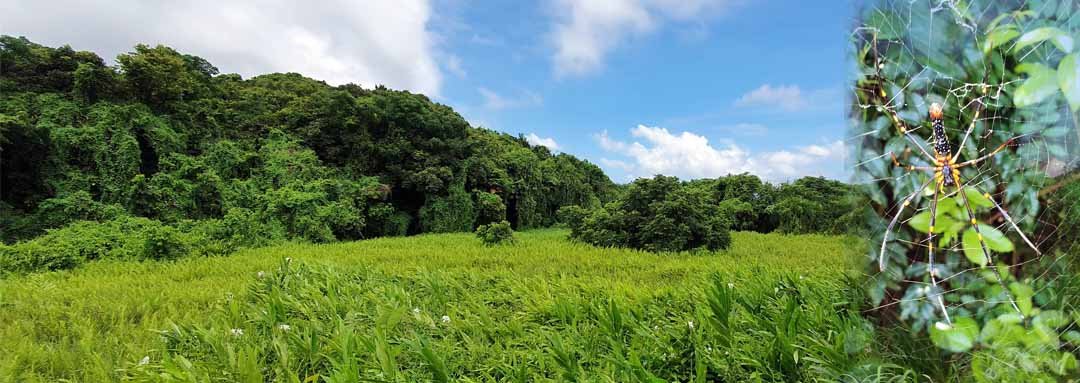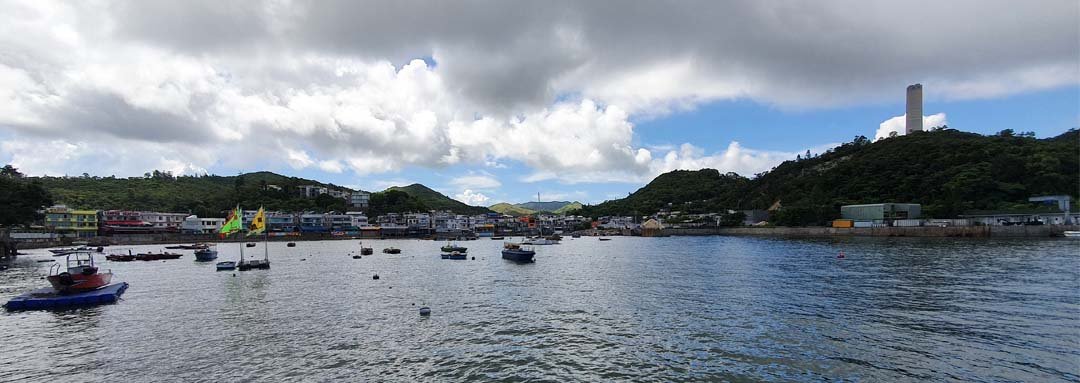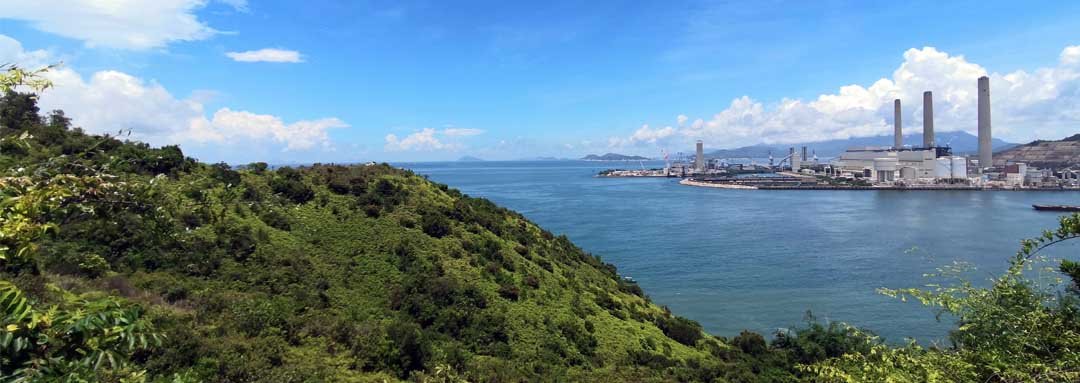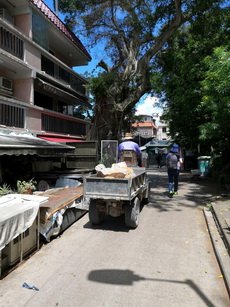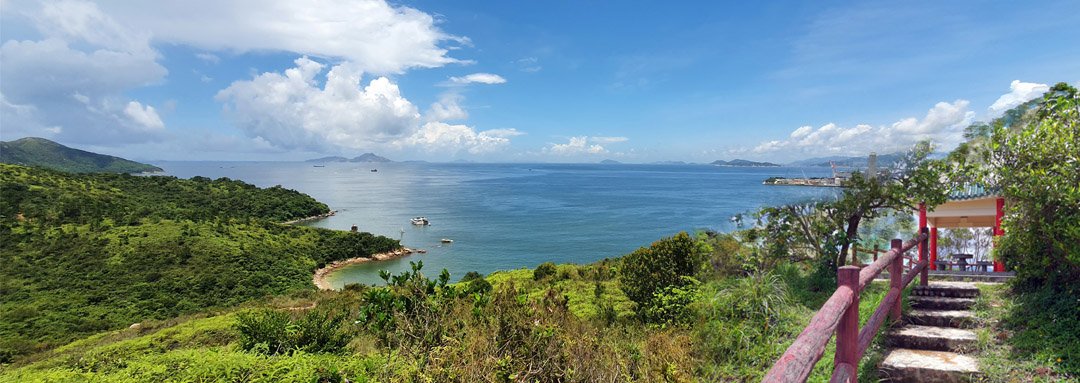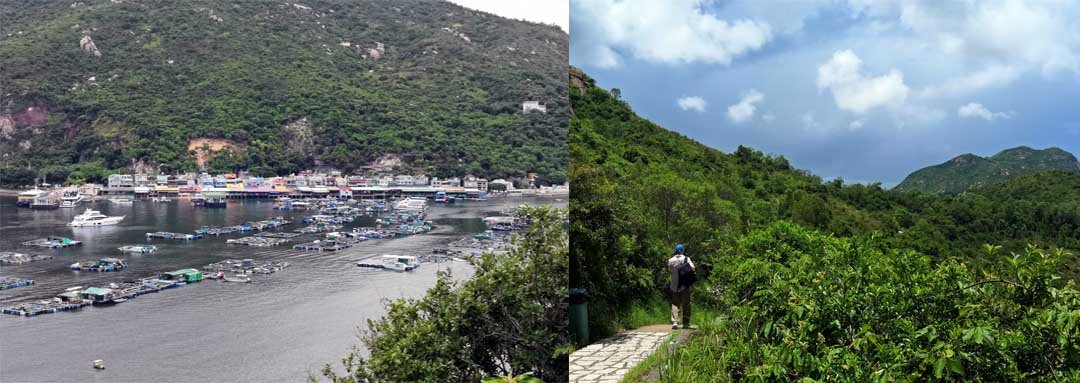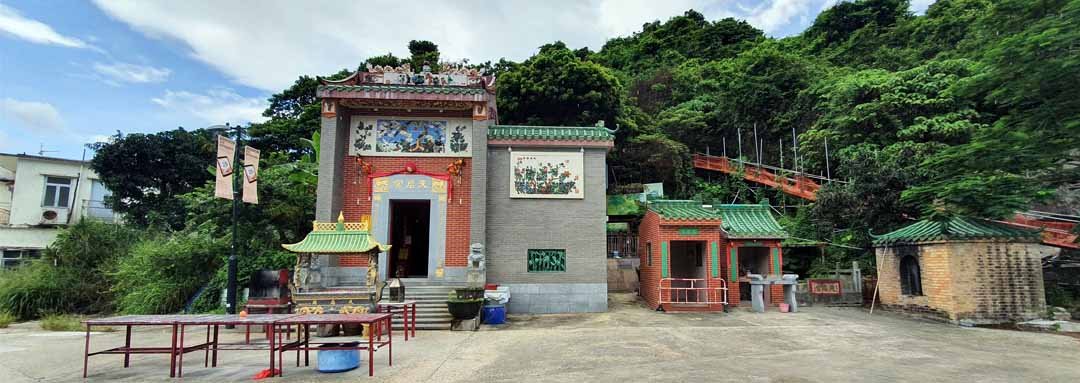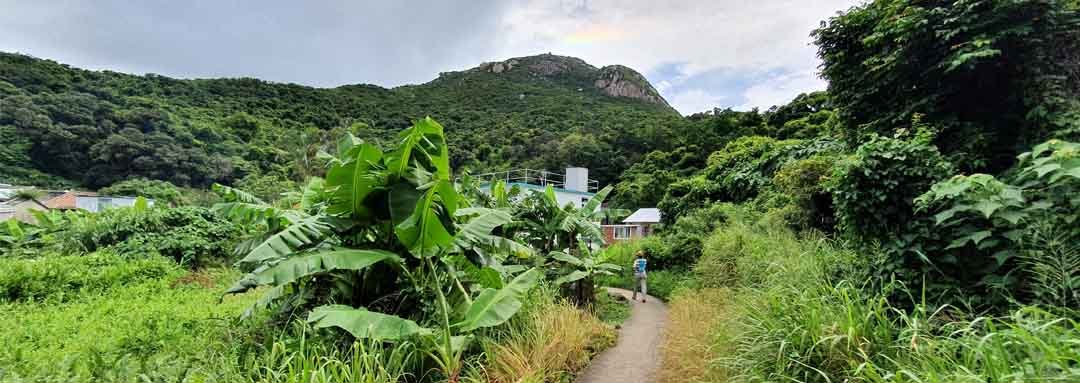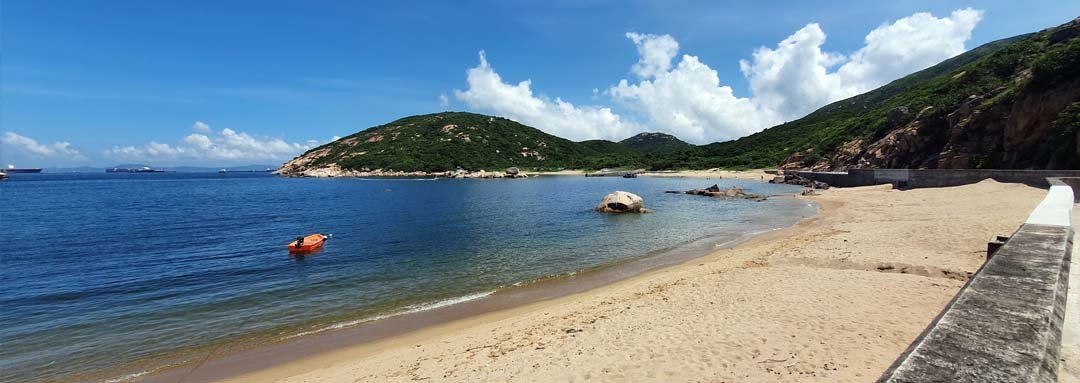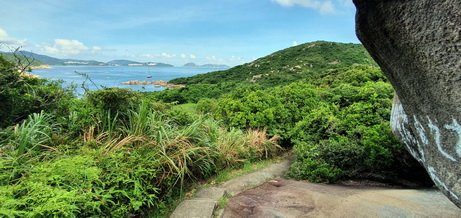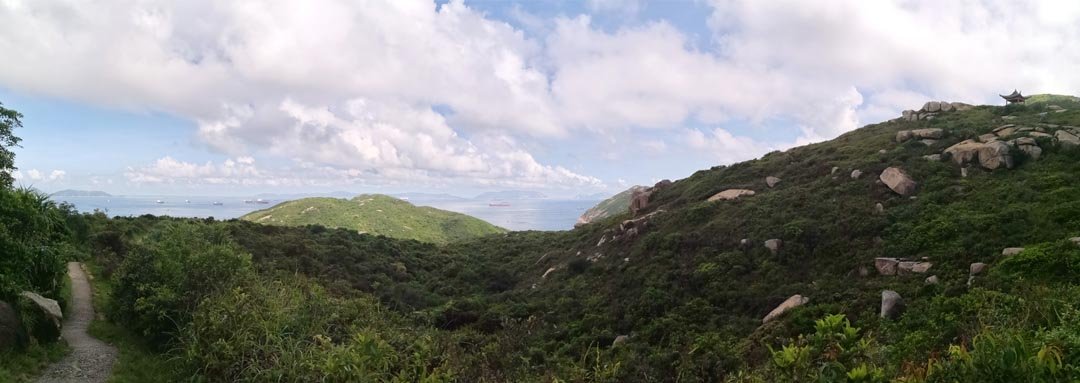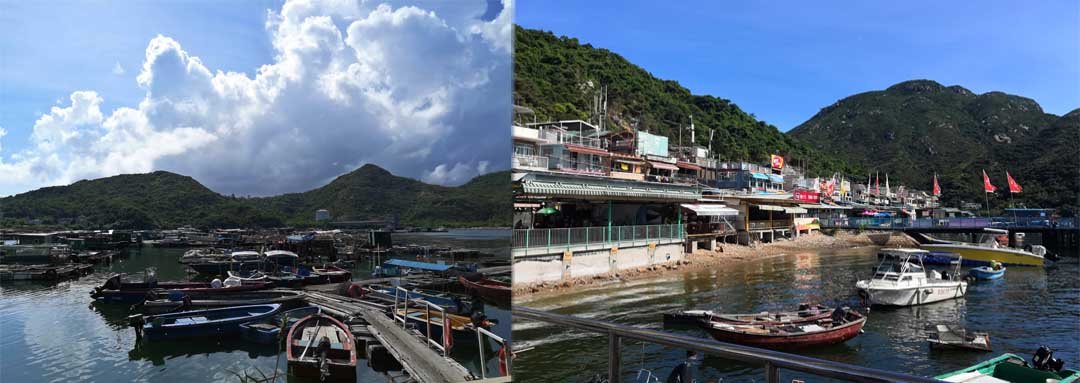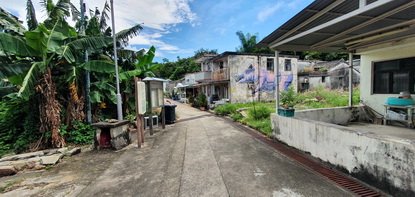lamma island
Green paradise
What will we talk about
How to get there? Piers – What to do there? – Yung Shue Wan – First beach&picnic area – Lamma Winds – Family Trail – Kamikaze Caves – Sok Kwu Wan – South Circle Trail – Up the mountain – Tips – My first itinerary
L
amma is one of many Hong Kong Islands. It’s is better known than others because of its proximity to the Central = Hong Kong Island, and very characteristic tall chimneys that you can see from afar.
Situated south of its bigger neighbor and open to the sea on the other side, it is the third-largest island of Hong Kong (over 13 square km). It houses the region’s electric power plant and is settled by those who prefer a quiet and jungle-like environment. There is nothing that resembles a true-sized car there and the locals prefer walking or riding a bike.
It is a good place for a walk or even a few of them. Going around the main trails you can do as much as 8 km and you still didn’t climb the Mount Stenhouse. There is some good seafood there, it is a great experience of nature and people are friendly – all very close to the buzzing city of Hong Kong – Kowloon.
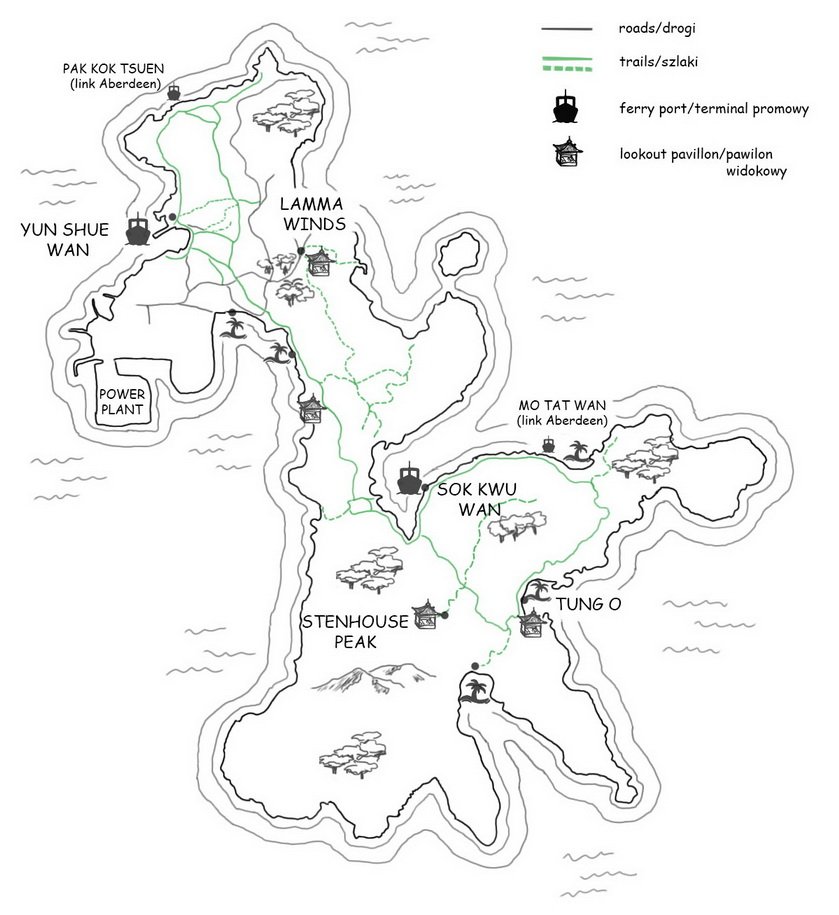
How to get to Lamma?
The only way to get to Lamma is to take a boat. Ports of access are situated in the Central and Aberdeen Ferry Piers.
There are two main villages on Lamma where you can go.
Yung Shue Wan – the bigger one. There are some trails in the North but most the tourists take the Family trail South to…
Sok Kwun Wan – the second village that the ferry comes to. Situated in the south part of Lamma. Smaller, one street, with nice restaurants serving mainly seafood. Here starts the South Circle Trail (as I call it).
Boat to/from Central Island, Pier 4
Price* to Yung Shue Wan (weekend) – 24,70 HKD
Price* to Sok Kwun Wan (weekend) – 31 HKD
*All the prices in this article are for adults – children normally pay half of it (child – under 12 years old)
The pier is accessible by a short walk from Central/Hong Kong MTR stations. You can get there going through IFC malls and above-ground pedestrian walkways (a long one and direct goes along Man You Street – it is from the Central MTR, exits A or B).
The pedestrian roads are the quickest way. Don’t worry if you cannot find them (it is a bit confusing at first) – you can always go alongside the road – the way to the pier is quite easy.
Both ferry entrances are for Lamma. The difference is that the ferry to Yung Shue Wan goes MORE OFTEN than to Sok Kwun Wan.
It is not a problem – you just need to know the schedule beforehand and do some planning about what you want to do on the Island.
Here is a link. The time of the journey is about 30 minutes.
Boat to/from Aberdeen
Price* to Yung Shue Wan (weekend) – 21 HKD
Price* to Sok Kwun Wan (weekend) – 18,70 HKD
*All the prices in this article are for adults – children normally pay half of it (child – under 12 years old)
If you go there by the MTR you need to take the South Island Line and look for Wong Chuk Hang MTR station. From there it is a taxi/bus ride, or a 1,5 km walk to Aberdeen central/pier area.
The promenade of the piers is very enjoyable and all green. It is good since you will have to walk alongside it to find a ferry point to Lamma. Just read the signs. Going from the MTR direction the first ferry should be to Yung Shue Wan. A bit further away is a ferry to Sok Kwun Wan.
Here is a link to the timetable. The journey time is about 35 minutes, because the ferry stops on the way – also at Lamma, at Mo Tat Wan (a tiny, quiet and adorable village with a beach – on the south trail).
Needless to say – the most popular way to Lamma is through the Central, but who knows… Maybe you will be closer to Aberdeen.
What to do on Lamma?
The name Lamma comes from the mistake of a famous Scottish cartographer Alexander Darlymple. While looking for the entrance to the Pearl River of China his colleagues noted that they will be passing close to Lam’a (southern fork). A note became a name, which later was changed even further receiving another “m”.
Today Lamma is a green heaven of fruit trees, flowers, mountains, and some few villages beautifully disappearing into the landscape. You can divide it into two parts.
North – smaller part, is concentrated around the biggest village of Yung Shue Wan
South – is home to Sok Kwun Wan Village and Mount Stenhouse. Both places are connected by a walking trail.
And now a question arises – where do you wanna start???
Only one word of advice – there are a lot more boats from Central to Yun Shue Wan. In the morning and late afternoon, they can be as frequent as every 20 minutes. They work until late in the evening, so there should be no problem in you staying on Lamma for a supper.
For the purpose of this article, we will be starting in the North, following the Family Trail down (check the map).
Arriving at the pier or the bus terminal you have the main square greeting you. Here is a spot to sit down and look at the people. The residents relax here, they come to eat or drink something, spend time with each other, do some sports or dances. It is a very peaceful place, with great views of the Tsing Yi Bridge.
Yun Shue Wan is the biggest village on the Island. And when we speak of about 6000 population it is quite a compliment. It is a mixture of nature and small houses. Typhoon shelter and boats of different sizes welcome you as you approach with the ferry. The coast looks amazing and it is easy to imagine that an important fishing village was once here.
A sight that greets you as well as the electric power plant – easily distinguishable by its 3 tall chimneys and a mountain of concrete. Before it Lamma was a happy little island, struggling a little bit with portable lights and water that needed to be brought from the wells and springs. The 1960s changed everything. With new technologies – electricity and running water – life became easier. But it also took the youth out of Lamma. They went, as the locals say, to seek “the greener pastures” in the mainland and Central Island.
The road from the pier takes you to the village in a natural way. But from the pier, you can go for a tour of the north part of Lamma. It is a pleasant walk that takes you along the shore to Pak Kok Village area and then you can return through Tai Peng back to where you started. It is mostly a sightseeing, less frequented trail, that is enjoyed by many on their following visits to the island. You can experience the great views of the South China Sea from here and the panorama of Lantau Island.
Most people decide to walk through Yung Shue Wan to the Family Trail that will lead them south. The village grew on a plastic industry that was the main source of income in the XX century. With the coming of tourists and the link with Hong Kong – fishing and agriculture became more popular.
But what you see going through today is a curious mosaic of Lamma. With the foreigners that choose to live here, Lamma became an international place, full of restaurants serving different kinds of foods and oriental handicraft shops. It surely looks very welcoming and it is difficult not to look behind the doors of colorful shops.
But then the way of life of the people here struck you with force and by surprise! It is said that Lamma is attractive because of its alternative lifestyle, hippies and artists, and a relaxed atmosphere. Yes – you can feel it. The villagers walk or bike not only because they chose to but because cars are prohibited here. The only things you will find are the tiny fire trucks and ambulances and transport vehicles with the open back. It is absolutely adorable!!!
If you want a variety of food to choose from – eat here. Or not, and direct yourself to the Family Trail and southern part of the Island which is mostly known for its seafood.
The paths of Yung Shue Wan will lead you through other small villages in the direction of the picnic area and Hung Shing Ye Beach. It is normally quite popular with people resting there, enjoying food, drinks, and magnificent views of the open sea. There is also a picnic area there and it is common to do a barbecue there – either by locals or tourists. If you come prepared you can give it a try as well.
Before you reach the beach, you will have the occasion to see Lammas Winds. The path crosses a road at some point and instead of going straight (to the beach), you just turn left and go up the hill. It is a small detour of a total of 40 minutes (max 1 hour). Only the plant life there is worth seeing, but the electric windmills are quite a sight as well. Especially for children – they can learn about wind energy there. There is also a path that leads to a small pier or, another one – to a small pavilion on top of the hill. A worthy prize for those with second thoughts – a magnificent panorama of the sea, Central Island, and southern parts of Lamma can be seen from here.
The family trail leading south is a leisure walk on paved ground. It winds, has its ups and downs but is a relatively easy pick for beginner hikers. Just remember to take water with you. There may or may not be a few shops on your way – but it is not guaranteed. The trail offers great views. It passes through, yet another, villages – and there are quite many of them on Lamma. Each consisting of a group of few houses. People there started as fishermEn, agriculture, and livestock holders. Now a lot of young people went to the city – some became famous. One of them is called Chow Yun or Donald Chow – he is an actor playing roles in Crouching Tiger, Hidden Dragon, or Pirates of the Caribbean: World’s End. He came from Wang Long Village and his family had a seafood/pigeon restaurant on Lamma. What a small world…
Before you enter the Sok Kwu Wan Village there is an interesting sign you will encounter. Kamikaze Caves… First – you will see a regular cave disappearing somewhere into the middle of the earth. Water drops to an underground lake creating an echo that invites you to stay there forever and listen… Only later you notice and read the tablet saying what happened here. During the Second World War, Japanese forces were keeping here ammunition and boats reserved for kamikaze pilots. These caves and some tunnels under Mount Stenhouse were man-made. It was in later times that all this stuff was fount here and the caves received its name.
Sok Kwu Wan Village welcomes you with a vast square where a Temple of Tin Hau is situated. There are more temples of this sea goddess here and in Hong Kong-mainland. Not a surprise there – she has been taking care of people at sea for hundreds of years now (here almost 150 years). There is even a special festival dedicated to her – with firecrackers, incense, and dragon dance. The beloved goddess is special in the Canton region.
The square has a visible path that will lead you to the belly of the village. The other way is somewhere between the trees, opposite the temple. The stairs lead up – if you take them you will start to make a circle on the Southern Trail which will eventually take you to the same place.
If your choice was to pass through the village first, you should follow the coast after it finishes. The view there offers you hidden beaches, views of the central and northern part of Lamma, and great countryside. Somehow it is different than everything you have seen thus far.
The path turns to pasture grounds of the former livestock holders. This is what Mo Tat New Village residents were doing for many years. Today you can find a nice beach here or you can pass through it as you descend from a slow ferry from Aberdeen. The village itself has moved a few feet away since at some point the termites ate the original houses! No need to fight with them – it was better to move the whole place.
Tung O village is more interesting in my opinion. Mostly because of the beach there. Since it is reasonably far from anything and you need to hike there, the place is mostly empty. The village is small, and you feel like you shouldn’t make all this noise passing through it. It is mostly known for its turtle refuge. A nearby beach – Sham Wan is closed from June to the end of October. It is the only place for the sea turtles to nest in Hong Kong, so it is strictly protected.
The last part of the circle or the first one if you have started next to the Tim Han Temple is the worst one. Climbing the mountain, you can appreciate the story of Lamma. It is an old place after all. Only the Goddesses’ temples are guarding it for 150 years. But there is some archaeological evidence stating 4000 years old there were people here. Before that, there was some volcanic activity, that shaped the south part of the Island.
You get to experience it more over the way. Huge rocks of different sizes start to be part of the scenery. It is granite mostly, shaped over the years into special rock formations that, somehow, are not falling yet… or are sticking out of the green landscape like some strange mushrooms. On the top of the hill, you can either start to walk down and continue the trail or take a detour to the highest point of Lamma – Mount Stenhouse, 353m high.
As you return to the village where you will be taking your ferry from, remember to double-check the timetable. Whether it is rest, more sightseeing, shopping, or eating… you want to have some time to enjoy it.
 Some tips to take with you:
Some tips to take with you:
- Remember about hydrating. Lamma has little shade on the way. You are also not guaranteed to encounter a shop on the way. The main points to do so are the two biggest villages where the ferry comes to. Remember about hydrating. Lamma has little shade on the way. You are also not guaranteed to encounter a shop on the way. The main points to do so are the two biggest villages where the ferry comes to.
- In the same subject – protect yourself from the sun. You may feel ok there, but you can have a nasty surprise at home
- The trails are paved, you should have little problems with walking. Some sections are steep, but the worst part is on the south circular trail between Tai O and Sok Kwu Wan Villages
- The Family trails, starting from the Hung Shing He Beach, takes about 50-60 minutes to Sok Kwu Wan. Then the circular southern trail is about 1,5 hours. You can count the additional one-way trails to Lamma’s Winds or Turtle Beach as 30-45 minutes each. Climbing Mount Stenhouse depends on your wits, but it is not more than an hour – unless the weather is very hot, then remember to rest a lot.
- Ferries to Lamma go from the early morning to the late evening. You shouldn’t have problems with coming back but planning is your friend
- Regarding the restaurants: Yun Shue Wan has more of them and there is a variety of choices: seafood, oriental and western cuisine. In Sok Kwu Wan you will mostly get the seafood. Although – you are in a fishing village and your dinner is literally swimming in a tank. It won’t be fresher than that!
My first itinerary:
- out of Central Pier around 10.00 AM
- arrived at Lamma 30 minutes later. We are hikers, so we went through the village to the trails asap. Passed through the Lamma Winds, the beach, and Sok Kwu Wan at a normal pace. We went where our eyes took us, stopped often to take photos, or just to enjoy the place. We finished the southern circle around 5 PM.
- our rest consisted of a beer after there 12 km (I don’t know how?!), some small seafood, and a nap on a ferry back
- we reached the Central around 7 PM and entertained ourselves with going to Temple Street for a bite of a grilled duck from a street seller. Then went back home.
- it was a day that made us return to Lamma again and again – if only for a leisure stroll and food.



